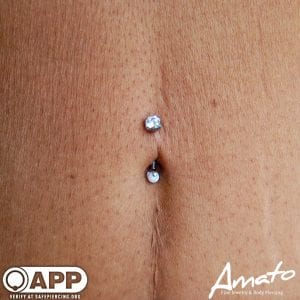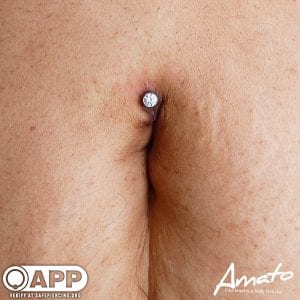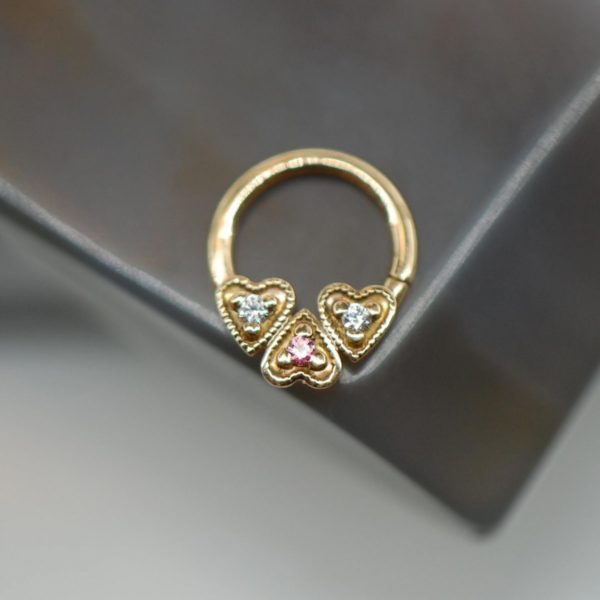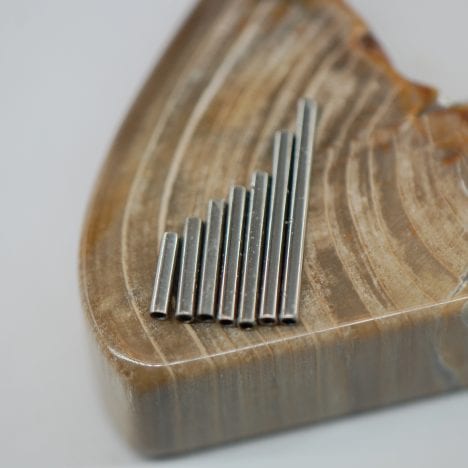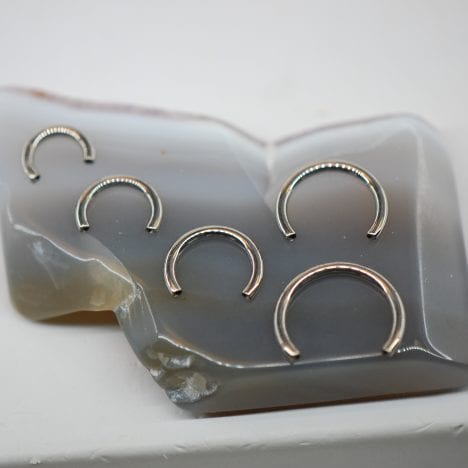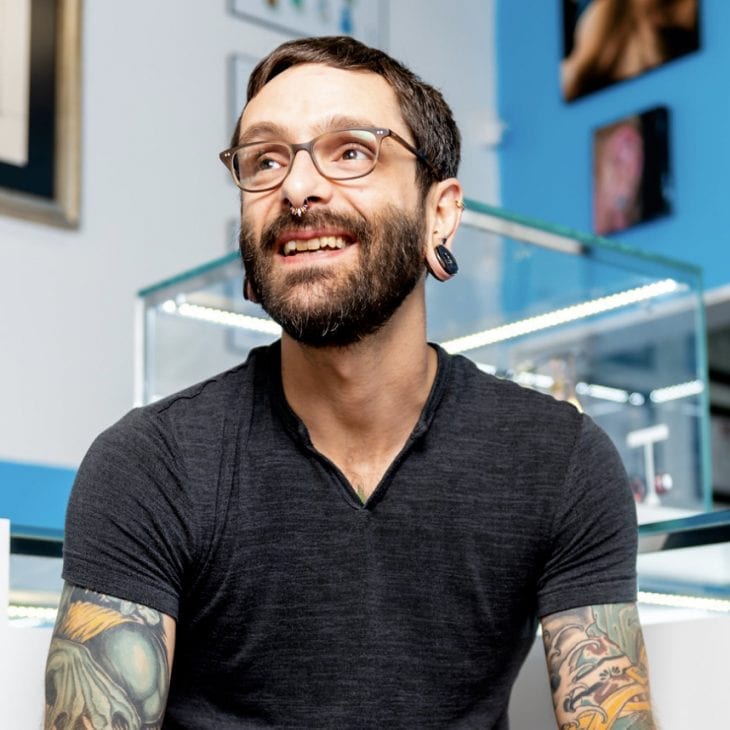Undoubtedly one of our most popular piercings here at Amato is the navel. Since we are located in sunny South Florida, navel season is year round! We love these piercings so much that they’re actually a specialty for our head piercer Joe. What makes them such a specialty of his? Well he has over 19 years of experience in the industry and has pierced an endless amount of navels, including navels that are a little different than most/may require a more advanced approach. Unfortunately, these piercings are also amongst one of the more frequently seen done incorrectly. Belly-buttons are organic shapes and vary greatly from person to person which means no two navel piercings are the same! Each navel is unique in its own way and some call for more attentive and tailored technique to produce a well placed and easy healing piercing. This variance in anatomy is what can cause a navel to be classified as “advanced”. We use the term “advanced” to mean requiring a high skill level to perform; so they’re not hard to do, they’re just in need of a piercer more knowledgeable and experienced. Navel piercings that are considered “advanced” include (but are not limited to):
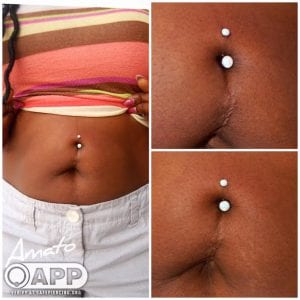
hysterectomy, forms of gallbladder surgery, etc; Once the navel has been surgically altered or repaired, the tissue changes drastically. In some cases, the tissue has changed enough that a navel piercing may no longer be viable. There is always scarring left behind after those surgeries, and the level of scarring can vary from person to person, but any scarring at all inevitably causes the tissue to become tighter and tougher which may result in the loss of ideal navel piercing anatomy. Scar tissue also usually decreases blood flow, making for a tougher heal overall. Now, this doesn’t mean these navels are all unpiercable; actually the majority of reconstructed navels can still be safely pierced! There are just some extra considerations that need to be kept in mind, and a little more consistent and thorough care needed during healing. It’s very important to do your research and find a piercer who has experience working with reconstructed/scarred navels to ensure your piercing is done safely and correctly; be sure to ask your preferred piercer what experience they have and if they have any pierced and healed reconstructed navels in their portfolios!
Post Pregnancy Navels:
We all know that pregnancy dramatically changes the body in many different ways. With the amount of growing the stomach does during pregnancy, the navel and surrounding skin can end up permanently altered afterwards. These changes may not always occur and may not always last forever, but for some, their navel after pregnancy is very different than their navel beforehand. Just like some stretch marks remain, there are plenty of people who experience loose/sagging skin on or around their navels even long after delivery. Typically this change in tissue does not affect the navels ability to be pierced, but may affect what jewelry is chosen for healing etc. If you are someone whos navel has changed an extreme amount after pregnancy then there’s a chance that piercing/re-piercing your navel now falls under “advanced” navels and should be seen by a piercer with experience in such.
Outward Navels (outies):
Navels that protrude out rather than dip in are relatively common. Sometimes they come from the development of excess scar tissue after the umbilical cord is cut, and sometimes they’re developed after pregnancy.Regardless of how you have one, these awesome navels require a little more skill and assessment to safely pierce. They should never be pierced through the actual “outie” part because this can cause serious issues, rather your piercer should assess the tissue above and make sure you have the proper ridge to support piercing. Most outie navels are still able to be pierced despite their unique shape, although some do not have enough navel shelf to support the piercing. Here at Amato, we usually do a consultation first and go over your choices for piercing and the majority of reputable piercers will do the same. Jewelry for these is often kept simple for healing, and once healed you can wear all of the fun pieces!
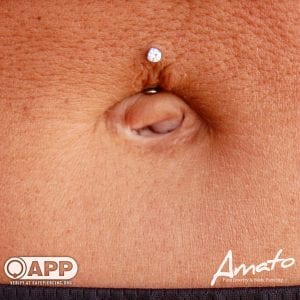
Plus-Sized Navels:
Most clients who fall under the plus-size category don’t have what we at Amato consider an advanced navel. Size usually plays hardly any role on your ability to get a navel piercing. However we have clients all the time say “I was told I can’t get my navel pierced- I’m too big!” Thats entirely false folks. It is more about the shape of the navel itself over anything else. A navels shape is largely determined by the tissue surrounding it and can vary greatly depending on your body. These variances happen in people of all sizes which is what makes navels such an interesting piercing to perform; though it is common for plus-sized clients to have more variance in the navel ridge which then requires more advanced piercing techniques. Because of this variance, many piercers won’t even attempt piercing them, but Joe has years of success getting these piercings to heal on every shape and size belly!

Lower Navels:
The lower navel is the bottom ridge of the belly button. Lower navel piercings aren’t as commonly requested as the standard navel, but have grown in popularity over the years so we decided to include them. Just like the standard navel, the lower navel piercing is extremely anatomy dependant. In fact, the suitable anatomy for this piercing is seen much less often than its counterpart. Here at Amato, we don’t necessarily classify lower navels as advanced meaning requiring special technique, but instead we consider them advanced because the correct anatomy is rare. Oftentimes we see these piercings performed on clients who don’t have the needed anatomy and this can lead to permanent scarring and/or migration of the piercing. This is a piercing that not everyone can get and that’s very important to note. The ideal anatomy for this piercing would be to have a fully developed and visible navel ridge similar/identical to the top navel ridge; one that moves and behaves in the same way a standard navel ridge does. This is a piercing that does require an anatomy consult prior to piercing, but is pierced in the same way a standard navel is pierced therefore it does not require advanced skill, just advanced knowledge! We suggest seeking a reputable piercer who has a good understanding of navel piercings for consultation and piercing needs.

If you are someone who meets the specifications of these categories and are interested in getting your navel pierced, we would be beyond happy to help! The process for getting a navel piercing with an advanced navel is a bit different from others. The first step is a consultation appointment. You can schedule with us anytime by calling the studio and booking , Joe currently works tuesday-saturday here at Amato. There is a possibility of being pierced same day, but often we do an anatomy assessment, discuss everything you can expect from piercing and healing then schedule you an appointment for piercing at a later date. These piercings are advanced and require not just a skilled piercer to perform, but a diligent and responsible client to successfully heal. More advanced piercings often take a little longer to heal and require some extra cleaning and care throughout the healing process. Without both parties giving their best, these piercings won’t work out. For that reason we always do all the follow up care, appointments, and checkups for free!
Written and Edited by Lynn and Margo
